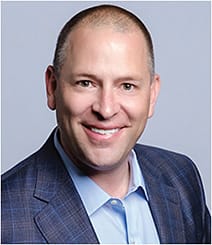Greg Kunst is the CEO of Aurion Biotech, a clinical-stage biotech company with locations in Seattle, Boston and Tokyo. Aurion’s first candidate, AURN001, is a patented cell therapy treatment for corneal endothelial disease. The company is preparing for clinical trials in the United States. Mr. Kunst has held previous positions at Glaukos Corp., Alcon and Kinetic Concepts.
Ophthalmology Management: It seems that AURN001 is one of the first clinically validated cell therapies for corneal care. Can you discuss how it works and the potential benefits of this treatment?
Greg Kunst: It’s important to highlight the role of the endothelium, what we’re treating and the problem we’re trying to solve. The corneal endothelium, which is a monolayer of cells that composes the outer layer of the cornea, plays a significant role in regulating the flow of fluid in and out of the cornea. Endothelial cell death (due to disease, trauma or aging) results in corneal swelling and opacity. These cells don’t naturally replicate in vivo: once they’re gone, they’re gone for good. If left untreated, corneal endothelial disease will progress over time, eventually causing blindness. Unfortunately, across the world there are millions of patients with this disease, and yet there is a global shortage of donor corneas.
The remarkable achievement of inventor Professor Shigeru Kinoshita at Kyoto Prefecture University of Medicine in Japan was that he figured out how to replicate endothelial cells in vitro. Aurion Biotech acquired this technology in 2020. Today, we harvest endothelial cells from a single donor and can produce enough cells to treat 100 patients who present with corneal endothelial disease.
This investigational cell therapy procedure is minimally invasive with an expected recovery period of approximately 2-3 hours. The procedure consists of three steps. In the first step, the surgeon makes a small incision in the anterior chamber and removes the diseased endothelial cells. In step two, cultured cells pre-loaded in a proprietary suspension are injected via a syringe into the anterior chamber. In step three, the patient lies face down for 3 hours to facilitate cell adhesion. Within days, vision improves; most patients show significant improvements in visual acuity (BCVA) and central corneal thickness (CCT) at 3 months postoperatively.
Research to date shows our cell therapy not only arrests disease progression but can also potentially restore vision to patients.
OM: The therapy has demonstrated long-term efficacy in Phase 2 and Phase 3 studies in Japan and had positive results in the IOTA trial in El Salvador. When will Aurion initiate clinical trials in the United States?
GK: Long-term data from the first 11 patients treated in Japan have been published in the New England Journal of Medicine (patient data at 2-year follow-up) and in the Ophthalmology Journal (patient data at 5-year follow-up). Sustained BCVA and CCT improvements in these patients point to the potential durability of this treatment.
Aurion Biotech initiated an exploratory trial, IOTA-Part 1 and IOTA-Part 2, in November 2020 and in May 2021, respectively, at the Clínica Quesada in San Salvador, El Salvador. This two-part study — which involved four US surgeons treating 50 patients with cells from two donors — demonstrated that the procedure can be performed in an outpatient setting and that surgeons can quickly become proficient in the cell therapy procedure.
Patients in the IOTA study have demonstrated BCVA and CCT improvements from baseline, and investigators continue to see patients every 3 months to assess safety and efficacy per protocol guidelines. We will continue to monitor patients beyond the 12-month timepoint to deepen our understanding of long-term outcomes.
The data from Japan and El Salvador are informing the design of our US clinical trials. This year, Aurion Biotech is deep into the process of preparing to submit an IND in order to commence US clinical trials.
OM: Can you describe a typical patient with corneal endothelial disease?
GK: This condition generally affects people over the age of 40. The most common form of corneal endothelial disease is Fuchs’ dystrophy. It is considered a genetic, or inherited disease.
The disease causes the formation of guttae (or bumps) in the endothelium, which prevent the endothelial cells from performing their hydration function. At early disease stages, corneal swelling and cloudiness may mean that patients struggle with glare and halos. Over time, as cells continue to die, patients may experience vision loss and eventually blindness.
Currently, the only treatment available to patients is a corneal transplant (DMEK or DSEK). While DMEK/DSEK are highly effective, the global lack of donor corneas has meant that many patients have no access to these treatment options. Aurion Biotech is hopeful that our transformative cell therapy, if proven safe and effective in US clinical trials, will address the supply-demand imbalance.
This is the most exciting project that I have ever worked on during my 15-year tenure in ophthalmology. It is very much akin to what femtosecond laser technology did for cataract and refractive surgery and what intravitreal anti-VEGF agents did for retinal diseases.
I believe that this could be the biggest and most important change that the corneal world has ever seen. OM









